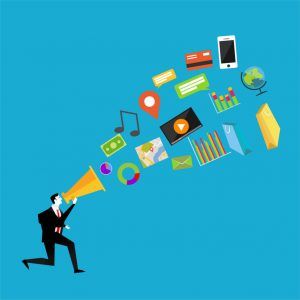Inbound Marketing is currently considered one of the most effective marketing strategies when it comes to capturing potential clients in a non-intrusive way for a specific business. As a complex method of marketing, Inbound Marketing consists of four phases or stages that are necessary to be optimized in order for the marketing strategy to be successful and to get satisfactory results from the beginning. For that purpose, at each of these stages different technological tools should be applied, always having in mind that they should be handled in a combined way, never independently, because only this way it is possible to optimize the results.
These four stages are:
Attraction: This phase is not about attracting any type of person, but only those that can really become good clients and, therefore, generate satisfactory business opportunities. In order to attract the correct audience, it is necessary to create content marketing based on a blog designed in a way that is attractive and interesting. It is also necessary to interact through different social networks, since this is where most of the potential clients move, which allows you to be in permanent contact with them and with the public in general. Taking into account that the vast majority of buyers use Internet search engines when they are interested in a particular product or service, the attraction phase will also require positioning your website properly in such search engines, for which it is essential to select the “key words” correctly and use the accurate titles, descriptions of products, images and other content, so that these are considered relevant.
Lead generation: Once the visitors are attracted to the website, the next step is to generate leads that will become true business opportunities, for which it is necessary to obtain relevant information from them, for example, their name, surname and email. Obviously, to obtain this type of information it is necessary to offer something in return, and that something could be special content that is interesting and valuable enough to fill out a form where the visitors will share their personal info and email. Among the most important tools in this conversion phase are the “calls to action”, that could be banners or links that, conveniently placed in the blog or website, invite the visitor to perform a certain action. Once the visitors click on the corresponding link, it will redirect them to the destination page where they will be provided with the appropriate information capable of generating a sales opportunity.
Closure: Once the visitors are attracted and successfully converted into leads, the next phase would be to transform them into clients, for which more complex marketing strategies are required, like lead scoring and lead nurturing. The purpose of lead scoring is to know which visitors are the most feasible to become buyers, while the lead nurturing is mainly focused on sending to them emails with certain personalized contents depending on their profiles.
Loyalty: Inbound Marketing is not limited to obtaining customers, but also seeks to make them feel satisfied and, therefore, be faithful to the brand or product in question. For this purpose, useful information should be provided at all times, it is advisable make different offers and promotions, offer services in real time through social networks, introduce new products and, ultimately, always provide quality information.”

